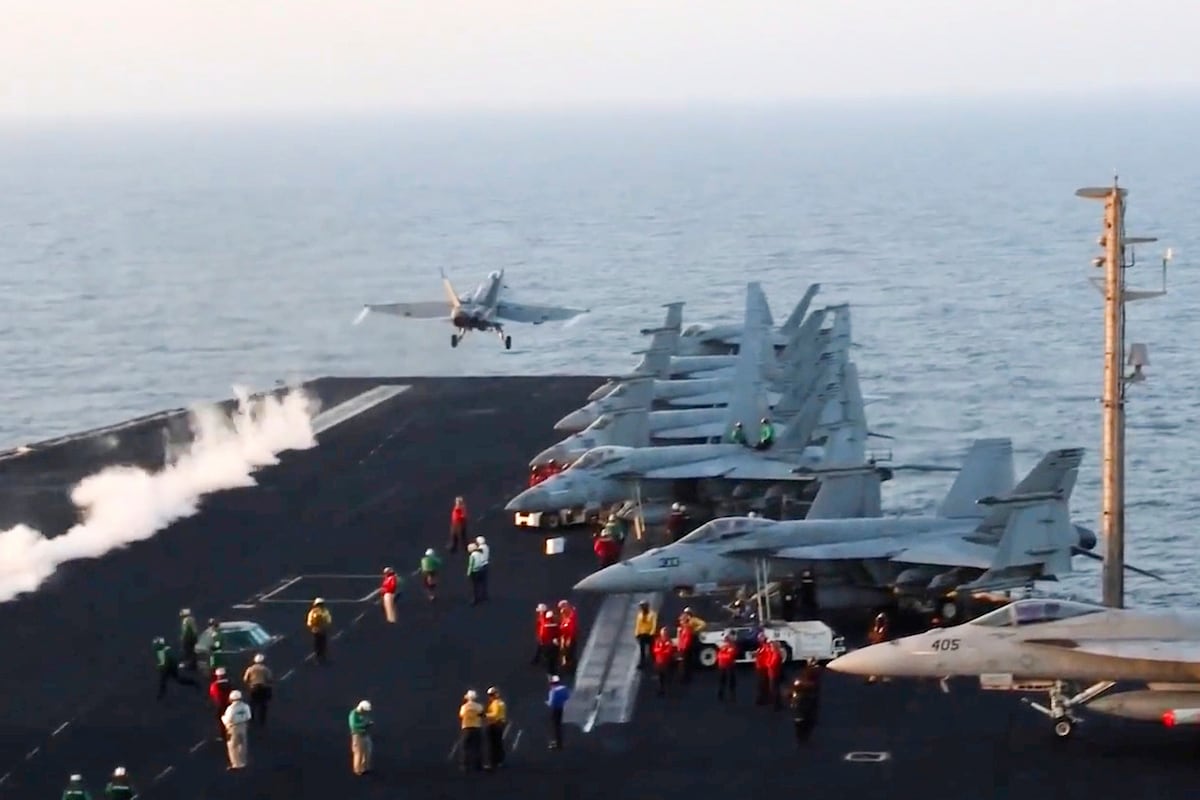Before the Trump administration began striking targets across Yemen to reopen global shipping, before many of its top officials included a journalist on a group chat to plan those strikes, in fact even before Donald Trump took office this January, many in his administration didn’t think attacking the Houthis was such a good idea.
“We are burning readiness to the tune of tens of billions of dollars for what really amounts to a ragtag bunch of terrorists that are Iran proxies,” then-Rep. Mike Waltz, now the president’s national security advisor, told Politico last year. “Iran is the core of the issue.”
“It’s truly a mark of how off-kilter our foreign policy is that we are now embarking on ongoing military attacks in Yemen – Yemen! – without any real prospect they will be effective,” Elbridge Colby, nominated to run Pentagon policy, posted on the social media site X last year.
Since the group chat on the commercial messaging app Signal became public last week, the Trump administration has argued the scandal only distracts from the “highly successful” airstrikes it began earlier in March. Even more, it’s framed the campaign as a return to American strength after years of “deferred maintenance” under the Biden administration.
But as some of the officials’ past statements show, the airstrike campaign shows a change in how some members of the Trump administration see the Middle East, and America’s interests there. The strikes have certainly escalated since last year, experts said. But they represent a high degree of continuity with the Biden administration’s strategy — and are likely to encounter the same problems.
“Whether we’re going to make the Houthis cry for mercy anytime soon is extremely unlikely,” said Michael Knights, an analyst at the Washington Institute for Near East Policy.
A ‘relentless’ campaign
The most recent attacks in Yemen began March 15, when U.S. Central Command hit 30 targets across Yemen belonging to the Houthis, a terrorist group largely sustained by Iran. Immediately, the administration sought to distinguish these attacks from its predecessor’s approach.
“Joe Biden’s response was pathetically weak, so the unrestrained Houthis just kept going,” Trump posted on his Truth Social app shortly after the attacks began.
Shortly after Israel’s war in Gaza began in the fall of 2023, the Houthis began attacking commercial ships passing through the Red Sea, where 15% of global trade passed until that year.
In response, the U.S. and a group of other countries began a task force intended to protect those shipping lanes. The American military sent aircraft carriers, destroyers and other ships into the Red Sea to escort vessels, and also began routine airstrikes against Houthi sites in Yemen.
The problem, officials in the Biden Pentagon later acknowledged, was that these strikes didn’t solve the root issue. Even when attacked, the Houthis could resupply their stockpiles with support from Iran, and the group was gaining prestige by continuing its salvos.
“One thing we learned from our experience is not to underestimate the Houthis’ resilience,” said Daniel Shapiro, head of Pentagon Middle East policy until January, who supports the current airstrike campaign.
The Trump administration’s answer has been to hit harder. It’s conducted more than 100 strikes across Yemen so far, White House Press Secretary Karoline Leavitt said last week, and it’s changed the targets. Whereas the former administration stuck mostly to military sites — think ammunition depots or launch zones — this one is much more willing to hit enemy leaders, including those closer to civilians in urban areas.
“We have destroyed command-and-control facilities, air defense systems, weapons manufacturing facilities and advanced weapons storage locations. While the Houthis still maintain capability, it is largely because of the nearly 10 years of support provided by Iran,” a U.S. defense official said.
These attacks have been occurring much faster than the former campaign. And they’re taking place alongside a greater effort to inspect ships entering Yemen for equipment meant to resupply the Houthis, potentially slowing the group’s recovery.
“This campaign will be relentless to degrade their capability and to open up shipping lanes in the region,” Pentagon spokesperson Sean Parnell said in a March 17 briefing.
Surge pricing
Still, outside experts say those lanes will likely stay closed for months, if not indefinitely.
Shipping companies have almost uniformly chosen to reroute around the Red Sea, reasoning that it’s more important for a ship to arrive safely than quickly. Doing so has actually increased their revenue, which will make it harder for any country to force a return to the status quo.
“The Houthis have reshaped global shipping, and they’ve done so in a way that’s more profitable for global shipping,” Knights said.
The other issue is that the Houthis have been here before. In fact, the group has been in a state of almost-constant war for the last 20 years — against Saudi Arabia, the Yemeni government, the United Arab Emirates and now the United States.
“The problem with the air war there is that it’s not going to work,” said Ben Friedman, an analyst at Defense Priorities, a think tank that calls for a more restrained U.S. foreign policy.
The Houthis began their attacks again March 11, after a short pause following a ceasefire in Gaza. An easier way to stop their attacks may be to pressure Israel to allow more humanitarian aid to reach the Palestinian people, Friedman argued, though U.S. officials are wary of making it seem like the Houthis are fighting a noble cause by attacking commercial ships.
Instead, the administration has continued to escalate the military campaign.
Last week it extended the deployment the Harry S Truman carrier strike group already in the Red Sea and announced it would bring over another one from the Indo-Pacific, leading to a few weeks of overlap before the Truman departs. It has also brought over additional B-2 stealth bombers and scarce air defense batteries.
In the meantime the airstrikes continue, including rounds over the weekend that pummeled areas across Yemen.
“We hit them every day and night — Harder and harder,” Trump posted Monday, again threatening Iran if it continued supporting the group.
The Red Sea has not reopened for shipping companies, and the military surge has many Democrats in Congress concerned about the mixture of means and ends.
“They’re aware that this will have costs for readiness,” said a Democratic congressional aide, speaking anonymously per the office’s policy, of the Pentagon.
The critique may sound like the sort of partisan grandstanding that often occurs in Washington. But last year, it wasn’t an entirely Democratic issue — at least for Waltz.
“We’re using a lot of munitions,” the then-representative said at a March 2024 hearing, describing the Biden administration’s strategy. “We’re burning readiness.”
Noah Robertson is the Pentagon reporter at Defense News. He previously covered national security for the Christian Science Monitor. He holds a bachelor’s degree in English and government from the College of William & Mary in his hometown of Williamsburg, Virginia.
Read the full article here








